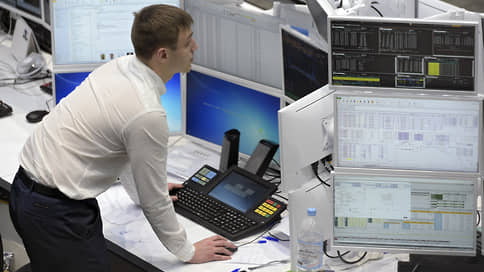The harbor loves silence – Kommersant
[ad_1]

In April, the inflow of funds to retail mutual funds (PIFs) increased. Shareholders invested 5.4 billion rubles in them, showing the best result in six months. At the same time, private investors fixed profits in risky equity funds, fearing a reversal in the market after growth in early spring. Investments in money market funds, which are considered as a “safe haven” for temporarily free liquidity, have grown.
The interest of individuals in the collective investment market has grown significantly. According to Investfunds, the net inflow of funds to retail mutual funds in April reached 5.4 billion rubles, this is a record result since September 2022, it is 0.6 billion rubles. higher than the previous month. Unlike last month, the main inflow of funds (more than 4.8 billion rubles) came from exchange-traded funds. This is three times more than a month earlier, and the best result since January 2022 (7.4 billion rubles).
The investment preferences of private investors have also changed. For the first time since the beginning of the year, there was a net outflow of funds from equity funds. In terms of volume, it was small (164 million rubles), but in March these funds recorded a net inflow of 1 billion rubles. and in general for the first quarter they attracted almost 3 billion rubles. Since the market lows in October 2022, the Moscow Exchange Index has grown by more than 40%, and only in the spring months it added almost 17% and for the first time since April 2022 fixed above the level of 2600 points. According to Artem Mayorov, director of the asset management department at Ingosstrakh-Investments Management Company, investors take profits because they “burn their pockets”.
At the same time, the minimum amount of funds for six months was withdrawn from bond funds – 0.76 billion rubles, four times less than in March. “Since mid-April, the debt market has been showing good dynamics, which could attract investors to bond funds,” says Ruslan Nikolenko, asset manager at BCS Mir Investments.
After the turbulence of 2022, and also taking into account that the external background can have a strong impact on the stock market, most investors choose the most cautious strategies, says Dmitry Postolenko, head of the fixed income management department at Pervaya Management Company. These include mixed investment funds, the net inflow to which, although reduced compared to March, however, amounted to almost 2.5 billion rubles. “Many investors are psychologically more comfortable buying mixed funds, since not 100% of their assets are invested in shares,” notes Mr. Mayorov.
The most conservative investors went to money market funds. According to Investfunds, in April, the net inflow into them amounted to almost 4 billion rubles, which is 1 billion rubles. higher than in March and the best result this year. Such funds earn mainly on reverse repurchase transactions, and therefore are not exposed to market risk. “Money market funds are a kind of “safe haven” for investors that allow them to take a wait-and-see attitude, but they do not bring income comparable to stocks and bonds over long time horizons,” says Viktor Bark, director of the asset management department at Alfa Capital Management Company. . He admits that over time, positions from such funds will begin to shift into more risky types of assets.
The return of interest in equity funds will depend on how quickly the market can recover from the correction in early May. During the inter-holiday week, the Moscow Exchange index fell to 2500 points, but then returned to the level of 2600 points. “We expect the Russian stock market to continue to grow on the back of an influx of new money after the payment of dividends and against the backdrop of the arrival of new investors who did not have time to participate in the growth of the first quarter. Moreover, the dividend yield this year may reach 10-11%,” says Mr. Postolenko. As for bond funds, according to Viktor Bark, the main question is when the CBR will resume the rate cut cycle, which requires favorable inflation data. Although inflation fell in April in annual terms to a multi-year low, the market still fears its acceleration and the return of the Central Bank to raise rates.
[ad_2]
Source link





